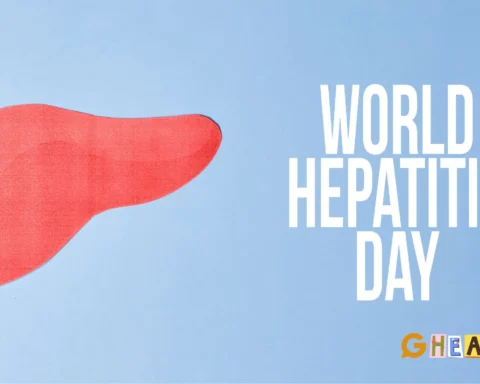The call to enhance diversity, equity, and inclusion (DEI) has been on the rise for quite some time, but the COVID-19 pandemic has intensified both the need and urgency for these efforts. As companies expand their reach globally through digitalisation and transnational collaboration, inclusion and diversity, initially exclusive to the domain of social justice, are now seen as a competitive advantage and a crucial factor for growth.
This article explores the importance of diversity and inclusion best practices and provides practical tips for creating a more inclusive environment in the workplace or community.
Table of Contents
Defining Diversity and Inclusion
Diversity includes a broad spectrum of factors that distinguish individuals and groups. In the workplace context, this means acknowledging and valuing the distinct attributes and experiences of employees in terms of age, gender, ethnicity, religion, disability, sexual orientation, education, and national origin.
Inclusion goes beyond diversity and involves the practical steps and efforts an organisation must take to ensure that employees from all backgrounds feel welcome and equally treated. An inclusive culture is one where individuals feel respected and valued for who they are.
Benefits of Diversity and Inclusion Best Practices in the Workplace
Business Growth and Financial Success
A McKinsey research in diversity suggests companies that actively support diversity in terms of gender, culture, and ethnicity tend to outperform those that do not. Specifically, the research revealed that companies in the top quartile for gender diversity experience a 21% increase in financial performance. In the case of cultural and ethnic diversity, there is a 33% likelihood of outperforming their counterparts.
Enhanced Innovation and Knowledge-Sharing
Each member of an organisation contributes a unique set of perspectives, thoughts, beliefs, and ideas, offering a diverse array of viewpoints. The inclusion of employees from diverse backgrounds injects a variety of ideas into everyday business operations.
Research indicates that the mere presence of physical diversity contributes to improved performance, especially for data-driven companies.
A diverse workforce typically brings a wealth of expertise across various business areas. Inclusive workplaces that cultivate a culture of diversity are more likely to excel in sharing knowledge within their organisations.
Elevated Company Reputation
Companies lacking diversity face public scrutiny, potential business loss, and recruitment challenges. Even tech giants like Google recognise the impact of diversity on their overall effectiveness and competitiveness in the market.
The public perceives companies that champion diversity and inclusion best practices in the workplace as more humane and socially responsible. Embracing diversity and inclusion reflects the employer's values of fairness and empathy, which appeals strongly to Millennials and younger generations who care deeply about such qualities.
Efficient Decision Making
Diversity significantly improves business decision-making and fosters an agile organisational culture. Studies consistently show that diverse teams outperform individuals in decision-making about 87% of the time. Inclusive decision-making processes with inclusive teams yield better results by 60% and execute them twice as fast with half the number of meetings.
Employee Engagement and Loyalty
Research conducted by Deloitte and other studies has shown that companies with diversity and inclusion best practices experience higher levels of employee engagement, which can lead to better performance and higher employee retention rates.
The inclusion process involves making individuals feel crucial to the company's success so they are more dedicated, motivated, and engaged in their work. When people sense value and appreciation, they function at full capacity.
Employees who feel valued and heard and perceive equal opportunities within their company are more likely to align themselves with the organisation's mission and core values. Moreover, they are inclined to take pride in their workplace, which boosts employee loyalty and empowerment and reduces turnover.
Diversity and Inclusion Best Practices
In the current competitive talent landscape, employers may need to go beyond conventional talent acquisition and recruitment methods and prioritise resource allocation and training initiatives to attract and retain skilled individuals with exceptional capabilities. Due to slow efforts, progress on diversification initiatives has been sluggish, and companies remain uncertain about the most effective ways to leverage diversity and inclusion for their growth and value-creation objectives.
The following highlights the key advantages of emphasising diversity and inclusion best practices in the workplace.
Use Diversity Statistics to Analyse Efforts
To address diversity and inclusion challenges, companies can adopt common strategies for setting clear goals, gathering relevant data, and tracking changes over time. Comparing diversity data with other organisations can help identify disparities and lead to specific goals and timelines for improvement. Conducting in-depth data analysis, continually assessing progress and challenges, and collaborating closely with key stakeholders to pave the way forward to these goals is essential.
Cultivate an Inclusive Workplace Culture
Incorporate Diversity, Equity, and Inclusion (DEI) into your company's foundation from the outset. This proactive approach, advocated by experts, ensures DEI is integrated into all aspects, preventing the need for later adjustments.
For established companies, address and improve the existing culture before recruiting. Relying on new hires to fix the culture might prove ineffective, and avoiding burdening individuals from diverse backgrounds with inclusion efforts is crucial.
Formalise inclusion efforts before expanding the workforce to create a sense of belonging and prevent marginalised individuals from feeling overburdened and leaving. Practising fairness in resource allocation and advancement opportunities is also crucial for a healthy workplace culture.
Mandate Diversity and Inclusion Training
Initiate DEI training sessions for leaders and managers and inclusive onboarding sessions for new hires that emphasise relevant policies and connect them with support groups. This helps familiarise all employees with the company's DEI policies and their impact on business success.
Foster inclusivity through forums like Slack groups and events and encourage open discussions, enhancing organisational culture and diversity sensitisation. Promote storytelling sessions, expert talks, and Q&A sessions for sharing diverse experiences. These spaces and channels create a welcoming environment for existing and new team members who identify with the discussions.
Provide Flexible Work Conditions
Research has shown that Millennials value work/life balance, and women prioritise a flexible work schedule. Therefore, companies should consider diverse demographics like female, neurodivergent and disabled employees in formulating and implementing policies that account for work/life balance and flexibility to appeal to a diverse candidate pool.
Encourage Employee Feedback
Gathering feedback from employees helps measure the effectiveness of DEI policies, refine recruitment practices, set expectations, and identify sensitive issues. Companies should create channels for employee feedback, conduct periodic anonymous employee surveys, and sufficiently address responses to establish a psychologically safe workplace where employees are comfortable voicing their concerns.
Conduct exit interviews to understand the reasons behind employee departures. Promote open and candid discussions during exit interviews, seeking constructive feedback on areas where the company can enhance its practices. Use this feedback to measure against current DEI goals and take steps to implement necessary changes.
Revise Job Descriptions
Research has shown that job postings using gendered-themed words, especially those with a masculine connotation like "ambitious" and "dominate", can reduce the appeal of a job to female applicants, potentially leading them to opt out of jobs they could perform well.
Conversely, feminine language attracted a more diverse pool of applicants, with women accounting for a higher percentage. Revaluate your job postings for any instances of discriminatory language and revise them to a more inclusive language, using gender-neutral terms, to help attract a more diverse pool of applicants.
Mitigate Systemic Biases
Individuals belonging to underrepresented groups like racial minorities or women in an organisation often face stereotype-based evaluations and tokenism, hindering progress. To combat these biases, companies can go beyond increasing the representation of specific groups.
Organisations should identify and correct systemic biases in talent management and decision-making processes such as recruitment, selection, and career mobility. Address these biases by investigating policies and processes to understand and identify what should be stopped, changed, or redesigned by leaders, managers, HR, and DEI professionals.
Adopt an Inclusive Hiring Process
Implement strategies to identify and correct biases in your hiring process. A 2022 survey from Deloitte revealed that many Gen Zs and Millenials reject job offers due to a misalignment in values. This issue can be ameliorated by diversifying interview teams and evaluating recruiting practices.
While having a diverse hiring panel is ideal, small businesses with limited teams can consider providing diversity and inclusion training for hiring managers to enhance their ability to recognise unconscious biases.
Standardise the hiring process by introducing checklists for managers, using uniform offer letters, and anonymous CV reviews to minimise personal information biases and ensure your recruitment process is comfortable and accessible for all potential candidates.
Additionally, using simultaneous evaluations involving hiring multiple positions offers a more inclusive decision-making architecture and has been linked to reducing bias.
Examine Technology for Potential Biases
The widespread use of technology in the workplace brings efficiency benefits but also raises concerns about reinforcing group-based inequalities. To establish fairness, it must be ensured that screening, hiring, and evaluation technologies rely on data that is fair to socio-demographic groups, considering their aggregate characteristics.
It is also crucial to proactively test technologies for potential impacts on workers before deployment and audit procedures to prevent biases.
Conclusion
In today's competitive business landscape, employers must recognise the importance of diversity and inclusion best practices and actively implement diversity initiatives at every level of the organisational process. The roots-up approach to implementation is essential for fostering a positive employee experience, boosting employee performance and cultivating an inclusive workplace culture that thrives on diversity. By fostering an environment that respects and values each individual and incorporating diversity and inclusion best prcatices, a company can not only excel financially but make an indelible mark on the global platform.
FAQs
What is diversity and inclusion practice?
Diversity and inclusion are strategies and initiatives companies adopt to foster a diverse workforce, leveraging diversity's impact for a competitive business advantage. Achieving workplace diversity is a prominent contemporary challenge and a key focus for recruitment and HR departments.
What is EDI's best practice?
EDI, or Equity, Diversity, and Inclusion, encompasses principles and practices to establish social justice, fairness, human rights, and equal access to opportunities. EDI aims to foster a diverse and inclusive workplace, ensuring fair and respectful treatment for all employees, regardless of their race, ethnicity, gender, sexual orientation, or other characteristics.
What are the five key areas of diversity and inclusivity?
Although diverse experiences are often intersectional and hardly categorisable into tight compartments, the five key areas of diversity and inclusivity are cultural diversity, racial diversity, gender diversity, physical disabilities, and diversity in interests.











[…] Diversity and Inclusion: Companies have historically failed to maintain standards of diversity and inclusion in the workplace, which results in isolation, discrimination and bullying of workers perceived as […]